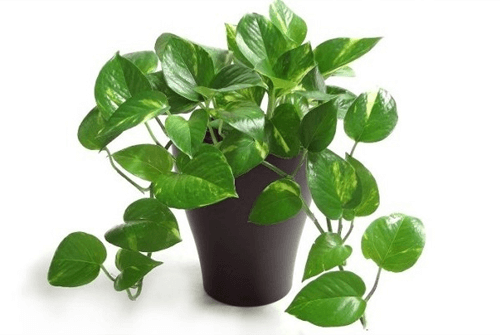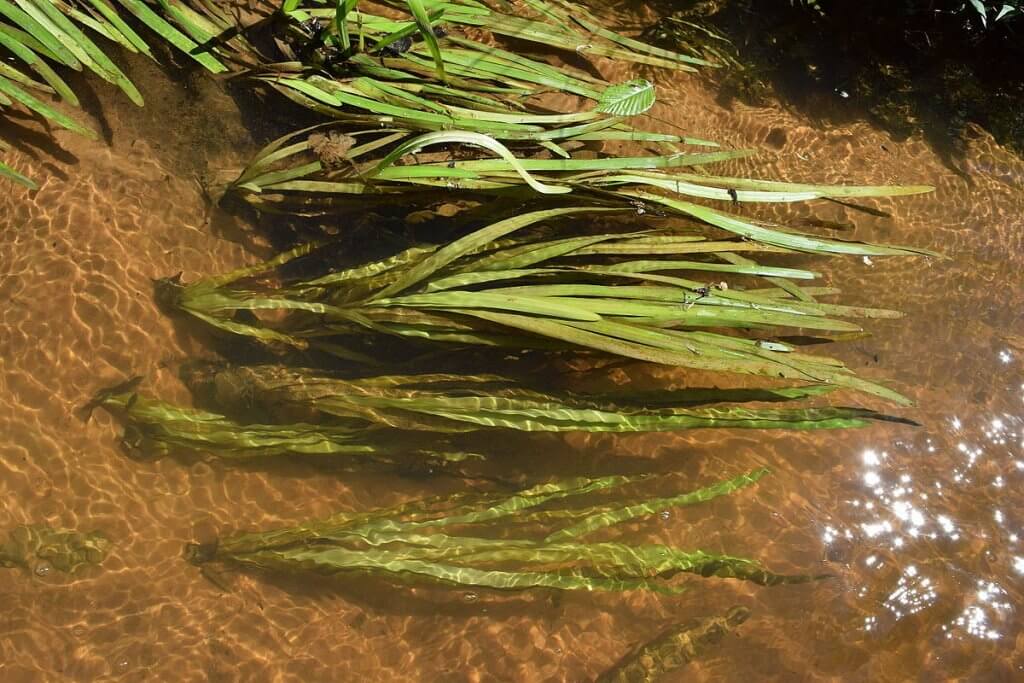Hi Everyone!! This article will share Types of Plants Questions & Answers.
In one of my previous posts, I have shared questions and answers of Organisations That Help Us and Amazing Animals so, make sure to go through these posts as well.
Types of Plants Questions & Answers
Question 1: Fill in the blanks:
(a) Plants that grow in hilly regions are tall to receive sunlight.
(b) Pitcher plant leaves are in the form of a container.
(c) Fixed aquatic plants breathe through the pores on the upper sides of the leaves.
(d) Plants that grow on land are called terrestrial plants.
(e) The root system of plants in deserts spread over a large area in underground search of water.
(f) The large size of the leaves of plants in plains allows lot of water to evaporate during the process of transpiration.
(g) Oak trees lose their leaves in autumn and regrow them in the spring.
(h) Plants that grow in coastal area require more water.
(i) Roots of mangroves are called breathing roots.
(j) Cactus has soft and spongy stems.
(k) Cedar, pine and fir trees grow in cold and hilly areas.
(l) The plants that float freely on the surface of water are called floating plants.
Question 2: Give two examples of plants from the following habitats:
(a) The plains
Answer: Mango, neem
(b) Marshy areas
Answer: Sundarbans mangroves, Pichavaram mangroves
(c) Hilly regions
Answer: Pine, fir
(d) Coastal regions
Answer: Coconut, pandanus
Question 3: Explain the following terms:
(a) Habitat
Answer: The place where a plant or an animal lives is called its habitat.
(b) Aquatic plants
Answer: Plants that grow in water are called aquatic plants.
Types of Plants Questions & Answers
Question 4: Name the following:
(a) Two aquatic plants
Answer: Lotus and Water lily
(b) Two desert plants
Answer: Cactus and Date palm
(c) Two floating plants
Answer: Duckweed and Water hyacinth
(d) Two insectivorous plants
Answer: Venus flytrap and Sundew
(e) A saprophyte
Answer: Indian pipe
Question 5: Make a list of adaptations of the following plants:
(a) Venus flytrap
Answer: It is an insectivorous plant that traps and eats insects for nutrition. Its leaf is folded into two halves and when an insect sits on the leaf, the two halves come together and close to trap the insect.
(b) Cactus
Answer: Cactus have thorns or spines instead of leaves. The spines protect the plant from loss of water as well as from grazing animals. They have fleshy stems that allow them to store more water. The stems are green in colour and carry out photosynthesis instead of leaves.
(c) Floating aquatic plants
Answer: These plants are light, small in size, not rooted in the soil and float freely on the surface of the water. There are spaces filled with air between the cells of these plants which make them light and spongy.
Question 6: How do plants in coastal areas survive the excess salt and windy weather?
Answer:
Plants in coastal areas have thick and shining leaves to reduce water loss.
The roots of these plants and trees grow near the surface of the soil and spread out over a wide area.
Question 7: What is an adaptation of plants?
Answer: The changes that allows the plants to survive in a particular place is called an adaptation of plants.
Question 8: What are mangroves? In which type of soil do they grow?
Answer: The plants that grow in marshy areas are called mangroves. They grow in sticky and clayey soil.
Question 9: Write two features of plants that grow in plain areas.
Answer: The plants that grow in plain areas have broad leaves and many branches on them. Some trees shed their leaves in summers and regrow in monsoon while some shed their leaves in autumn and regrow in spring.
Types of Plants Questions & Answers
Question 10: Write importance of plants. (Two points)
Answer:
Plants provide us food such as fruits, vegetables, cereals, pulses, etc.
Medicines are also obtained from plants.
Question 11: What is common in all the different types of insectivorous plants?
Answer: Insectivorous plants have modified leaves to trap the insects.
Question 12: Give Reason:
(a) Growth in the coastal areas is a challenge for the plants.
Answer: The challenges of coastal area are excess salty water and the windy weather which pose a threat to the survival of the plants.
(b) Leaves of cactus are modified into thorns.
Answer: Cactus has to survive in very dry and hot environment. Leaves of cactus are modified into thorns or spines as it reduces the surface area so less water is lost and it also protects cactus from animals.
(c) Branches of the plants growing on mountains are cone-shaped.
Answer: Snow accumulates on branches and leaves or needles when there is high snowfall. The conical shape of conifer trees (on the mountain) prevents the accumulation of snow on it. The conical shape also helps to get the snow to fall off the tree quickly and to get the sunlight. Also, the wax coating on the leaves protects them from extreme cold conditions. Examples: pine, almond, deodar, fir, mosses and fern.
(d) The bark of the trees in the rainforests becomes smooth.
Answer: Heavy rainfall in the rainforests enables continuous movement of water on the surface of the trunk making the bark smooth.
Question 13: Write in short about:
(a) Carnivorous plants
Answer:
Plants that feed on insects.
Leaves are modified to trap insects.
Examples – Pitcher plant, Venus Flytrap
(b) Mangroves
Answer:
A mangrove is a shrub or small tree that grows in coastal saline water.
They have a special root system to cope with saltwater and wave action of seawater called breathing roots.
In mangrove trees, the roots grow upwards.
Breathing roots enable them to breathe by absorbing air during high tide.
Example – Sundari.
(c) Epiphytes
Answer:
These are flowering plants that grow on tree trunks and branches to get light.
They get food from the air and water, and their roots hang in the air.
Example – Orchids.
Question 14: What features of the leaves protect them from extreme cold?
Answer: Features such as being pointed or needle-shaped with wax-like coating on them, protects them from the extreme cold.
Types of Plants Questions & Answers
Question 15: Why are roots of plants growing in rocky shores tough?
Answer: The roots of plants growing in rocky shores are tough because they have to make their way through the rocks.
Question 16: Give Reason:
(a) Plants growing in areas with heavy rainfall have a thin bark and drip tip leaves.
Answer: Plants growing in areas with heavy rainfall have a thin bark because they don’t need thick bark to prevent moisture loss like those in temperate deciduous forests. Plants also grow thick leaves with drip tips and waxy surfaces to allow water to drain quickly to prevent rotting.
(b) The thick stem and long roots of cactus help it to survive in desert.
Answer: Thick stem of cactus stores water and waxy coat on it stops the water from evaporating. It has very long roots spread to large areas underground to collect water.
Question 17: See the image given and answer the questions:
(a) Identify the plant.
Answer: It is a Money plant.
(b) State one adaptive feature of this plant.
Answer: It is a climber and has weak stems. A limited amount of sunlight reaches the soil surface so, many climbers are found growing on trees to reach to the sunlight.
Question 18: State one characteristic feature of each plant that helps it to adapt to the region where it is found.
(a) Coconut
Answer: The coconut’s external husk protects the internal seed from predators and the salt of the ocean.
(b) Mango tree
Answer: Mango leaves have thick outer covering to prevent water and nutrient loss.
(c) Pine
Answer: The seeds are protected by a cone which is a woody outer covering.
Question 19: Give reason:
(a) Leaves of fixed aquatic plants have a waxy coating.
Answer: Leaves of fixed aquatic plants have a waxy coating to ensure that water does not stick to the leaves and it also prevents the leaves from rotting.
(b) Coral Root is a non-green plant.
Answer: Coral Root is a non-green plant because it does not have chlorophyll.
Types of Plants Questions & Answers
Question 20: How do the following adaptations help the plants growing in hilly regions to survive better?
(a) The branches slant downwards.
Answer: The branches of these plants slant downwards which allows snow to slide down easily.
(b) The plants are tall and straight.
Answer: Plants growing in hilly regions are tall and straight which enables them to receive sunlight and bear leaves throughout the year.
(c) The seeds are enclosed in cones.
Answer: The seeds of these plants are enclosed in cones which protect them against cold weather.
Question 21: Amit went for a trip to a desert area where he saw some cacti. Write two adaptations that he may observe in the plant.
Answer:
Cacti have thorns or spines instead of leaves.
They have green fleshy stems.
Question 22: Observe the given picture and answer the questions:
(a) Identify the plant.
Answer: Vallisneria
(b) From where does these plants get carbon dioxide for photosynthesis?
Answer: They use carbon dioxide dissolved in water to carry out photosynthesis.
(c) Which gas is released in water after the process of photosynthesis?
Answer: Oxygen
Question 23: What will happen if we cut all the breathing roots of a mangrove plant?
Answer: The mangrove plant will not be able to survive as breathing roots help them to get air.
Question 24: What are saprophytic plants?
Answer: The plants that cannot make their own food and absorb nutrients from dead plants and animals are called saprophytic plants.
Question 25: Explain the adaptation of underground aquatic plants.
Answer: Underground aquatic plants have ribbon-like leaves and breathe through their body surface. Their stems are rooted in the water beds. Their leaves and stems are flexible and have air spaces which allow maximum movement in the water. They use carbon dioxide dissolved in water and release oxygen into the water.
Question 26: Write True or False:
(a) Oak trees lose their leaves in spring – False
(b) Plains are the most fertile regions of the Earth – True
(c) Desert plants have spines instead of leaves – True
(d) The kind of plants that grow in a particular region depends only on the climatic conditions there – False
(e) The plants growing in hilly areas are tall and straight – True
(f) Duckweed is a fixed aquatic plant – False
(g) Deserts receive very little rainfall and are hot and dry regions – True
(h) The plants growing in hilly areas have broad leaves – False
(i) Coastal areas plants grow in humid climate and salty water – True
Question 27: Match the columns:
| Column A | Column B |
| a. Saprophytic plant | i. Duckweed |
| b. Insectivorous plant | ii. Lotus |
| c. Floating aquatic plant | iii. Coral root |
| d. Fixed aquatic plant | iv. Sundew plant |
So, these were Types of Plants Questions & Answers.

